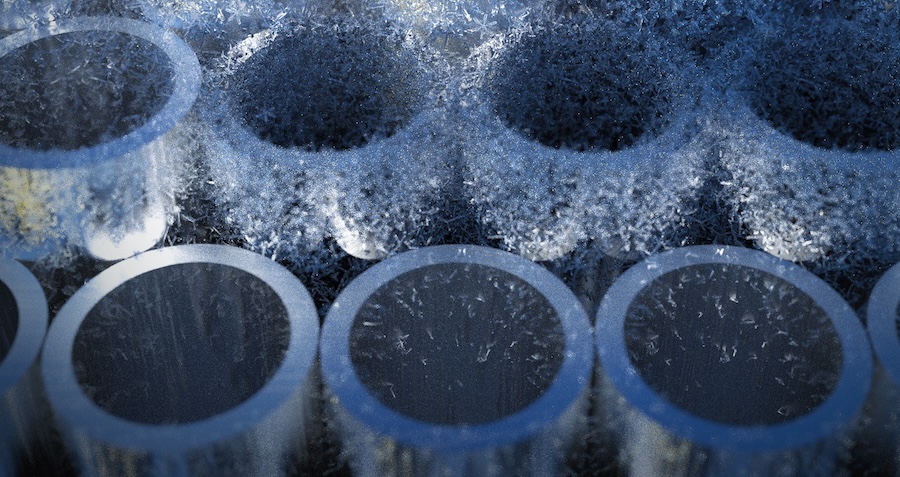

Sign up for daily news updates from CleanTechnica on email. Or follow us on Google News!
Carbon capture and sequestration in all of its various ineffective, inefficient and expensive forms is having another run up the hype cycle. Nothing has really changed. The problems still exist. The alternatives are still better. The potential for use is still minuscule. And so, the CCS Redux series, republishing old CCS articles with minor edits.
Recently [in 2018] PhysOrg, a science news aggregator, published an article provided to it by the Goldschmidt Conference, one of the world’s largest geochemistry-oriented conferences, organized by the 70-country, 4,000 member Geochemical Society. Entitled Scientists find way to make mineral which can remove CO2 from atmosphere, the article summarized a conference paper that had been presented in August of 2018 with promising results for room-temperature, catalyzed production of magnesite from source CO2.
The presented paper was by Professor Ian Power from Trent University in Ontario, and he’s quoted in the article. Similarly, the article includes an extended comment from Professor Peter Kelemen at Columbia University’s Lamont Doherty Earth Observatory in New York.
What do whoever wrote the article, Power himself, and the commenting Kelemen neglect to mention?
The scale of the problem is absurdly, distantly above any possible mechanism that magnesite provides for carbon sequestration.
Was PhysOrg alone? No. Science Daily published the same press release. Science Alert was slightly more forthcoming about the scale of the problem, but still fell short and put it under a headline that made it sound as if the Second Coming had arrived. The Independent referenced itself in a sentence of caution, without saying much of anything why, but at least the headline was mostly accurate.
In all, I counted 24 separate news articles on the subject. All of them failed completely on one element of accuracy that was glaringly obvious, which was that they all repeated the headline claim of removing CO2 from the atmosphere, an air-carbon capture premise which the article body itself doesn’t say is happening at all.
The article itself is adequate if silent on the magnitude of the carbon problem, but the undoubtedly forthcoming paper hasn’t been published yet. Professor Power publishes scientific papers regularly on the subject of sequestering carbon in minerals, so this will undoubtedly appear in one of the several journals he has published in.
Let’s tease apart what the article actually says that is significant. The following are direct quotes:
- A tonne of naturally-occurring magnesite can remove around half a tonne of CO2 from the atmosphere
- polystyrene microspheres as a catalyst, magnesite would form within 72 days
- The microspheres themselves are unchanged by the production process
- process takes place at room temperature, meaning that magnesite production is extremely energy efficient
- For now, we recognise that this is an experimental process, and will need to be scaled up
The actual scientist is clear on what he’s doing and isn’t overstating it. So far, so good.
What isn’t in the article that’s probably of use?
- There are about a thousand billion tons of excess CO2 in the air that we’ve added since before the Industrial revolution.
- It’s implicit that the process takes pure gaseous CO2 as a feedstock, not atmospheric CO2 directly. The comment at the bottom of the article by Professor Kelemen supports this.
- There is no economically viable way of removing CO2 from the atmosphere yet in any volume except natural processes in the carbon cycle. There is no economically viable way of removing CO2 from coal plant effluents. This is an unsolved problem.
What does this mean?
The process probably has to be able to reduce excess atmospheric CO2 by at least a few percent to make it worth considering. Let’s take 10% as a nice round number. That gives 320 billion tons of CO2, which would turn into 640 billion tons of magnesite assuming the ratio held (and chemistry remains chemistry after all).
How much is 640 billion tons of magnesite? Well, the entirety of the USA produced about 86.3 million tons of concrete in 2017. That’s four orders of magnitude there. China’s a bit closer. It produces 2.4 billion tons of concrete annually, which is ten times more than India, the runner-up. That’s only two orders of magnitude less. Assuming that the world decided to go all in on this and could achieve the same scale of production of magnesite, it would only take 267 years to remove 10% of excess atmospheric CO2.
Of course, tons of cement can be produced in a dry process cement kiln every day. The process doesn’t take 72 days. So that will make things worse. The process will either be much more expensive or much slower.
But of course, magnesite is useful stuff, right? Well, not in anything like these volumes. The total US magnesium compounds consumption was 830 thousand tons in 2016. That’s a few orders of magnitude in the wrong direction. There really isn’t very much use for magnesite globally. Just the CO2 emitted by US coal plants if turned into magnesite would exceed US demand by 3,000 times. Globally under 30 million tons of magnesite were produced for consumption in 2015.
Oh, and it’s a health risk.
The Occupational Safety and Health Administration (OSHA) has set the legal limit (permissible exposure limit) for magnesite exposure in the workplace as 15 mg/m^3 total exposure and 5 mg/m^3 respiratory exposure over an 8-hour workday.
So let’s net this out.
If we poured enormous amounts of money and resources into this, orders of magnitude more than we do producing all of the cement in the world, we would produce a lot of unusable rock that’s a health risk and it would take longer than just letting the carbon cycle do it.
The numbers involved are stupidly big. The people promoting things like this don’t do the math. The journalists who report on it and the media outlets that carry it do us a disservice.
People reading these couple of dozen headlines would be left with the impression that a solution is just around the corner, when the reality is that we have to stop burning fossil fuels quickly and let nature remove the excess.
2024 note: Having now looked at multiple mineralization schemes, they are consistently as devoid of ability to scale and deliver useful results in useful timeframes at economically viable costs. This apparently is a feature of the class of solutions, not a defect from their perspective.
References:
Have a tip for CleanTechnica? Want to advertise? Want to suggest a guest for our CleanTech Talk podcast? Contact us here.
Latest CleanTechnica TV Video
I don’t like paywalls. You don’t like paywalls. Who likes paywalls? Here at CleanTechnica, we implemented a limited paywall for a while, but it always felt wrong — and it was always tough to decide what we should put behind there. In theory, your most exclusive and best content goes behind a paywall. But then fewer people read it!! So, we’ve decided to completely nix paywalls here at CleanTechnica. But…
Thank you!
CleanTechnica uses affiliate links. See our policy here.





